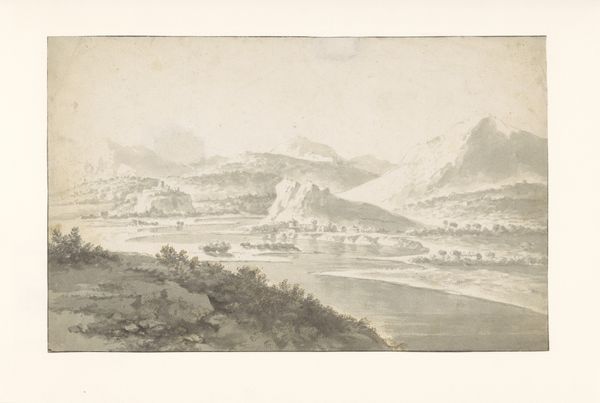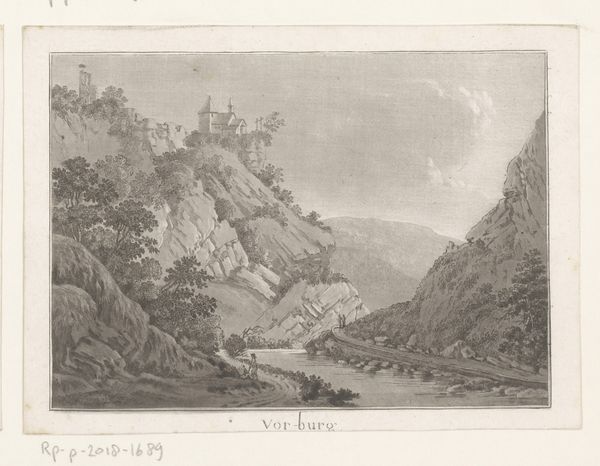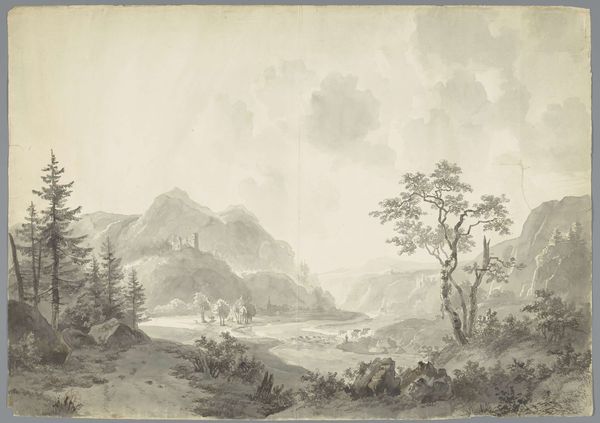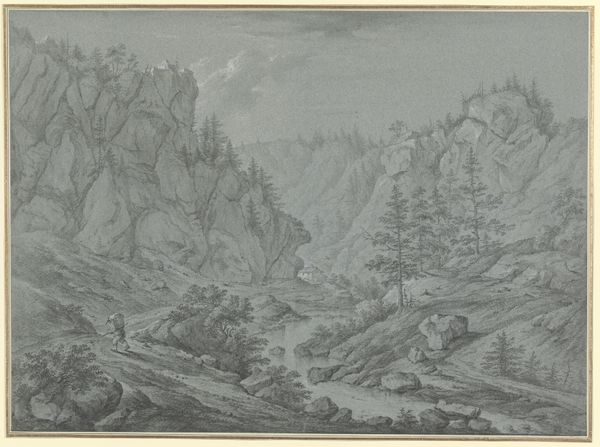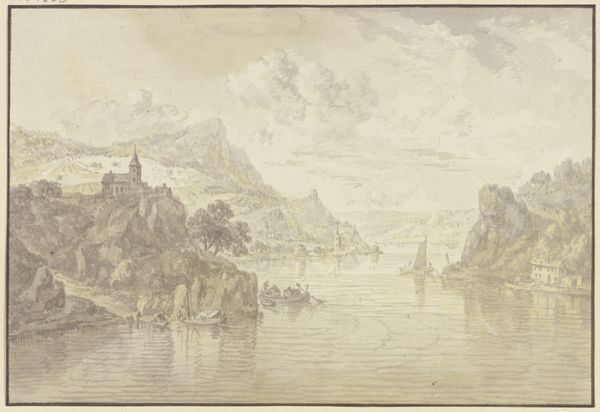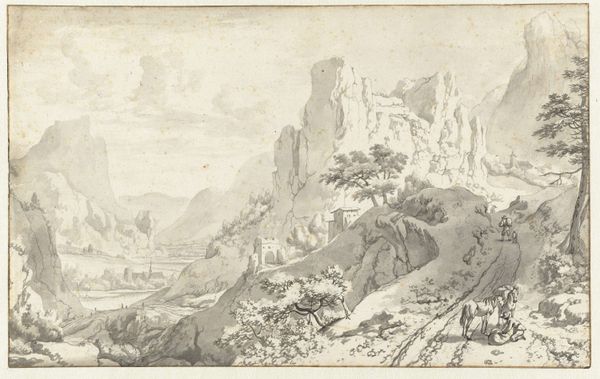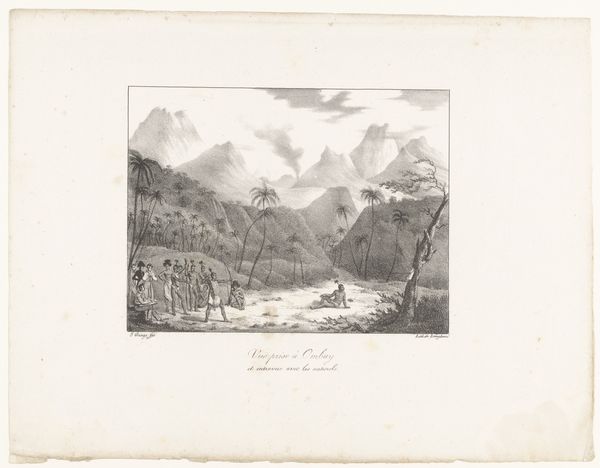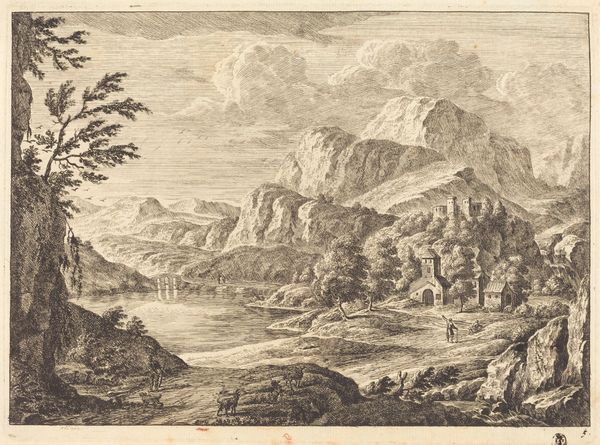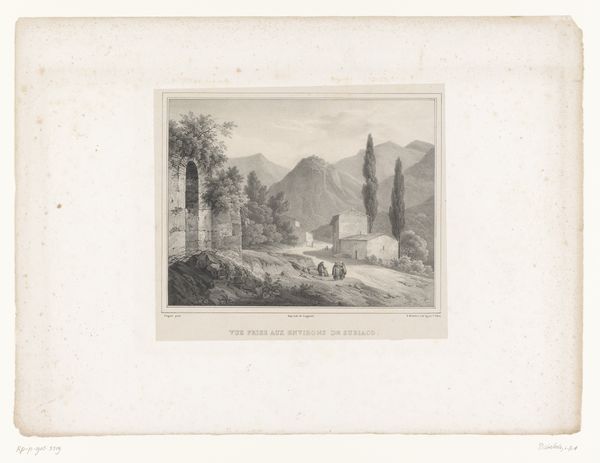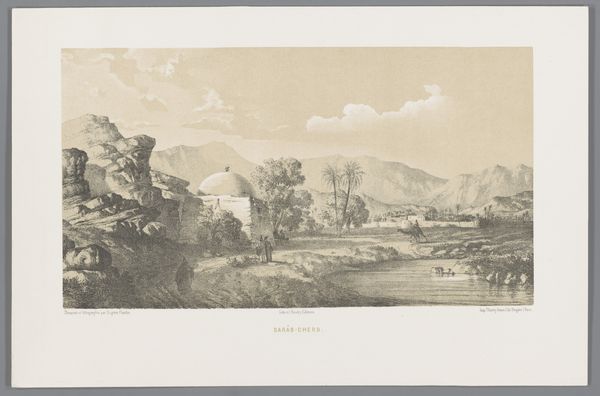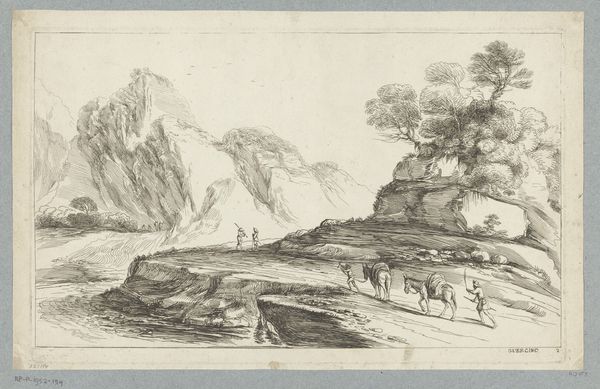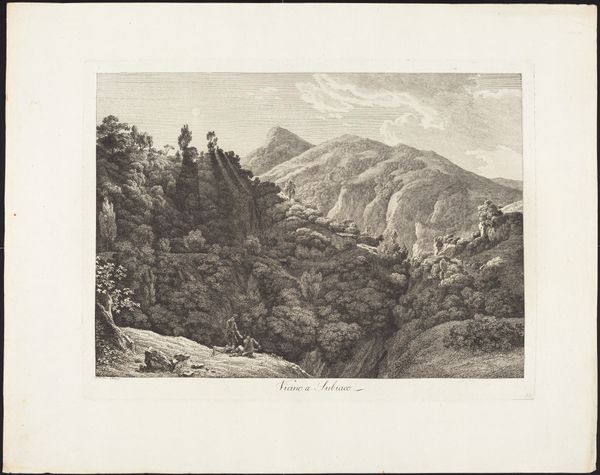
drawing, watercolor, pencil
#
drawing
#
baroque
#
landscape
#
watercolor
#
pencil drawing
#
pencil
#
watercolor
Dimensions: height 151 mm, width 196 mm
Copyright: Rijks Museum: Open Domain
Editor: This is "Rivierlandschap" or "River Landscape" by Jan Griffier the first, made sometime between 1655 and 1718, using pencil and watercolor. The delicate lines create this really ethereal landscape with castles perched on craggy cliffs. It's moody, almost dreamlike. How do you interpret this work? Curator: I see a powerful dialogue between humanity and nature, shaped by the tumultuous social and political landscape of 17th and 18th century Europe. Griffier wasn't just depicting a landscape; he was reflecting anxieties and power dynamics of the time. Note how the human structures, these castles, seem almost impermanent against the vastness of the natural world. Do you think this positioning is accidental? Editor: Not at all, it almost looks intentional. It is if nature will eventually overwhelm those castles... like it's foreshadowing something. Curator: Precisely! Consider the Baroque period, with its emphasis on dramatic tension and the power of the church and monarchy. Now think about the rising merchant class, the shift in societal power, and religious conflict. This landscape captures that push and pull. How might we view the river itself? Editor: Maybe as a symbol of constant change and the passage of time, always flowing, eroding those very structures? Curator: Exactly! And consider, too, that landscape painting provided one of the few venues at the time for artistic and personal expression. The composition and color palette become statements in themselves. This work embodies an active space for reflecting on humanity's place within a world undergoing massive change and, possibly, anticipating even bigger upheavals. Editor: That really makes me reconsider the piece. I saw it as just a pretty picture, but now I see a subtle commentary on society. Curator: Art allows us this constant dialogue, reframing the past and potentially illuminating pathways for the future.
Comments
No comments
Be the first to comment and join the conversation on the ultimate creative platform.
